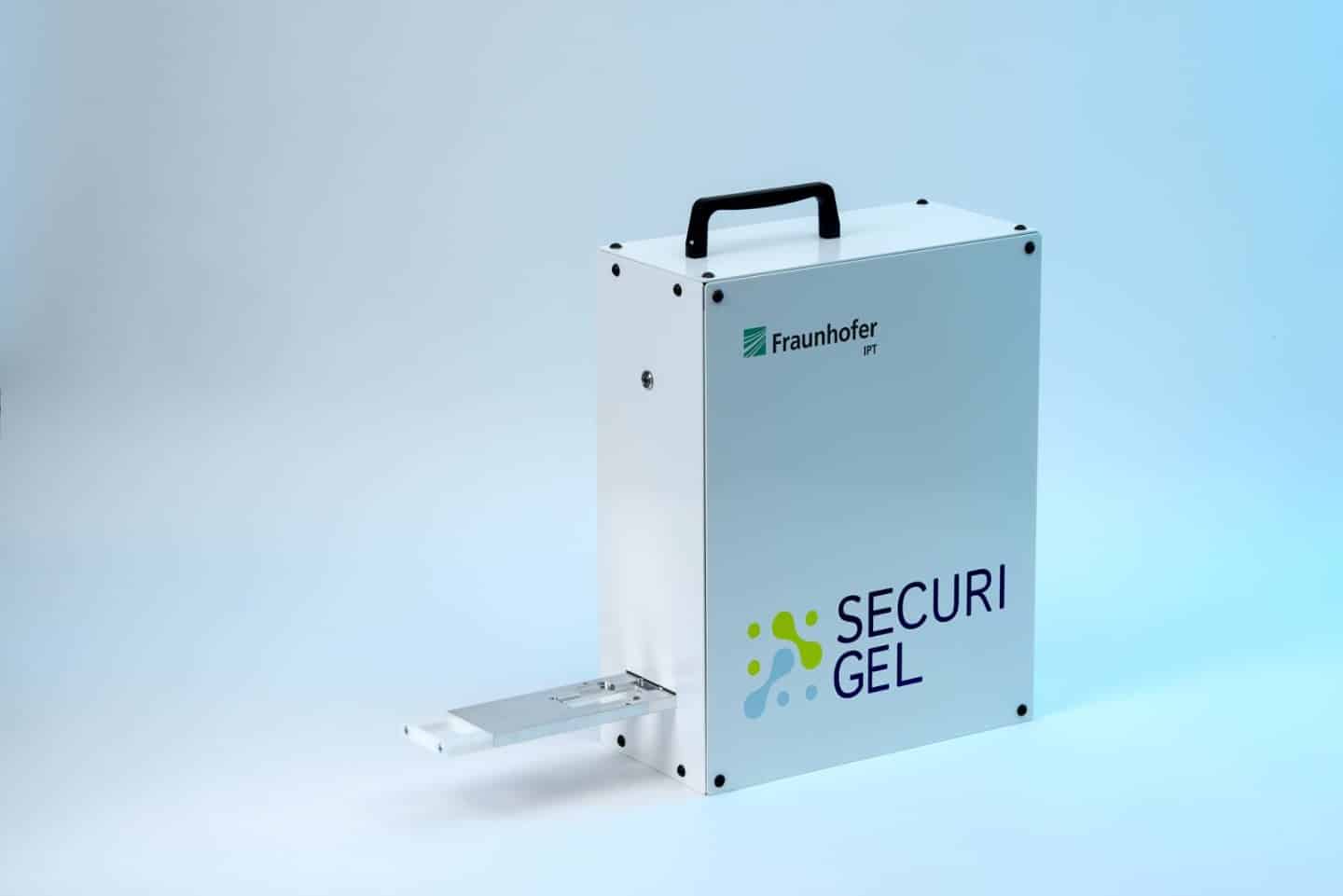
Researchers at the Fraunhofer Institute have developed a new kind of corona test that uses a different method to duplicate the genetic material. In addition, researchers of the Fraunhofer Institute are also working on a scalable, open, and digital PCR test system, where the result is available within 15 minutes and the data is automatically sent directly to health authorities, says the institute in a press release.
With the Pathogen Analyzer are the advantages of rapid antigen testing and PCR testing combined. The result of the test will be available after just twenty to forty minutes. With the old PCR test, getting the result can take up to two days, while the rapid antigen test lacks reliability. Another team at the Fraunhofer Institute is currently developing a scalable, open and digitalized PCR test system that will produce results in just 15 minutes and will send the data back to health autorities to ensure that we are better equipped to fight pandemics.

Twelve types of viruses in a single sweep
“With our Pathogen Analyzer, we detect the genetic material of the viruses directly. We printed multiple small hydrogel droplets (biosensors) onto a test chip, which is similar in size to a rapid antigen test”, says scientist Daniel Reibert. The test chip, with the sample of a nose swab, is heated to 62 degrees Celsius in a compact and mobile analyzer. The buffer solution and the high temperature expose the virus’s genetic material and multiply the nucleic acids for detection within the biosensors. This reaction takes place at a constant temperature – the heating and cooling of the sample liquid that is biochemically necessary for a PCR test is not required. Patients can connect a smartphone app to the analyzer to receive personalized test results. A light signal in the analyzer detects the amount of the pathogen’s genetic material and sends the final result directly to the affected person.
Another innovation: “Each biosensor contains capture molecules that emit fluorescent radiation of a different wavelength when irradiated with light if they have captured the appropriate pathogen. Each biosensor is like a small individual test,” explains Reibert. Taking a multiplexing approach not only increases the reliability of the results but also makes it possible to detect up to 12 different types of viruses simultaneously using a single sample and a single test chip. “As we developed the system to be modular, it can be quickly adapted to test for new pathogens.”
One of the challenges was to help develop the subsequent manufacturing processes for the test and ensure that they were inexpensive – after all, the test should not cost more than one euro when mass-produced. For the chip itself, the researchers are therefore relying on roll-to-roll processing. The individual sample biosensors can be printed using either a 3D printer or the established screen printing process. In the long term, the test should also function without an analyzer, being fully usable with just a smartphone: Cellphones already come equipped with a light source and camera, and the heating element can be integrated into the test chip itself. Then, the researchers hope, the test could provide fast, inexpensive and reliable results not only in central locations such as stadiums or doctors’ offices but also directly at home – and for a wide range of pathogens.

PCR platform
Fraunhofer researchers are also developing a scalable, open and digitalized PCR test system that will produce results in just 15 minutes. PCR processes are the diagnostic gold standard when it comes to identifying coronavirus infections. Unlike rapid antigen tests, they function even in the case of a low viral load and detect the pathogen with a high level of accuracy. The disadvantage of standard PCR tests is that they are not currently suited to mass, ad hoc, on-the-spot testing, where the greatest possible ease-of-use, rapid results and reasonable costs are required.
The aim is to combine the advantages of more sensitive PCR tests and cheaper, but less reliable, on-the-spot antigen tests that are sold in drug stores and supermarkets. The new tests will also be more affordable than the PCR rapid test systems that are currently on the market. The device is only 15 by 15 by 20 centimeters in size and has a simple design. In addition to the microfluidic cartridge and pump, it includes heating structures and a fluorescence camera as a detector. No expensive components are needed.

Selected for you!
Innovation Origins is the European platform for innovation news. In addition to the many reports from our own editors in 15 European countries, we select the most important press releases from reliable sources. This way you can stay up to date on what is happening in the world of innovation. Are you or do you know an organization that should not be missing from our list of selected sources? Then report to our editorial team.
